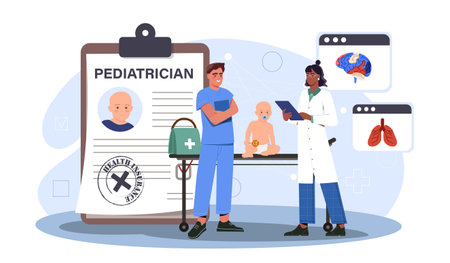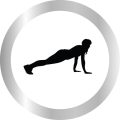1. Introduction to Cardiac Rehab Safety
When it comes to cardiac rehabilitation, safety is the number one priority. Cardiac rehab helps people recover after heart attacks, heart surgeries, or other heart conditions. However, exercise can sometimes put extra stress on the heart, especially for those who are still healing. That’s why safety isn’t just a good idea—it’s absolutely essential.
Why Is Safety So Important in Cardiac Rehab?
Every patient’s heart is different, and everyone recovers at their own pace. The main goal of cardiac rehab is to help patients get stronger without putting them at risk. Here’s why minimizing risks is so important:
| Reason | Description |
|---|---|
| Preventing Complications | Exercise can sometimes trigger chest pain, arrhythmias, or even another cardiac event if not done safely. |
| Building Confidence | Patients feel safer and more comfortable participating when they know safeguards are in place. |
| Customizing Care | Everyone has unique needs—safety measures help tailor the program for each person. |
The Role of Screening, Assessment, and Monitoring
Three key steps keep cardiac rehab safe: screening, assessment, and monitoring. These aren’t just fancy terms—they’re how healthcare teams make sure each patient gets the right care at the right time.
- Screening: Before starting any exercise, doctors look at medical history and current health to spot any red flags.
- Assessment: This step checks how fit a patient is and what their limitations might be. It helps set realistic goals for recovery.
- Monitoring: During every session, staff keeps an eye on vital signs like heart rate and blood pressure. This way, they can catch any problems early and adjust the program as needed.
Setting the Stage for Safe Recovery
A safe environment lets patients focus on getting better without worrying about setbacks. By combining careful screening, thorough assessment, and ongoing monitoring, cardiac rehab teams create a strong foundation for success—one step at a time.
2. Initial Patient Screening
Why Initial Screening Matters in Cardiac Rehab
Before starting any exercise program, especially in cardiac rehabilitation, its crucial to ensure patient safety. The initial screening process helps identify potential risks and tailor exercise plans for each individual. This step follows evidence-based protocols recommended by major organizations like the American Association of Cardiovascular and Pulmonary Rehabilitation (AACVPR) and the American Heart Association (AHA).
Key Elements of Cardiac Rehab Screening
Health History Review
A thorough health history review is the foundation of safe cardiac rehab. Clinicians gather information about:
- Past and current heart conditions (like heart attacks or heart failure)
- Other chronic diseases (such as diabetes, hypertension, or kidney disease)
- Previous surgeries or medical procedures
- Medications and allergies
- Lifestyle factors (smoking, alcohol use, physical activity habits)
Risk Stratification
After reviewing the health history, patients are classified into different risk categories. This helps determine the level of supervision needed during exercise sessions.
| Risk Category | Typical Characteristics | Recommended Supervision |
|---|---|---|
| Low Risk | No significant arrhythmias or symptoms; normal heart function; no complicated history | May participate with minimal supervision after initial sessions |
| Moderate Risk | Mildly reduced heart function; controlled symptoms; some risk factors present | Requires more frequent monitoring during exercise |
| High Risk | Severely reduced heart function; recent cardiac events; ongoing symptoms or complex history | Needs close supervision and possibly one-on-one monitoring |
Readiness for Exercise Assessment
This part checks if a patient is physically and mentally ready to begin exercise. It may include:
- Physical exams (blood pressure, heart rate, weight)
- Simple functional tests (like walking tests or sit-to-stand tests)
- Mental and emotional readiness questions (confidence, fears about exercising, motivation)
Cultural Considerations in the U.S.
In American cardiac rehab settings, screening also respects patient diversity. Healthcare providers often ask about language preferences, family involvement, and social support systems to create a welcoming environment for everyone.
Summary Table: Steps in Initial Patient Screening for Cardiac Rehab
| Step | Description |
|---|---|
| Health History Review | Collect information on medical background and lifestyle. |
| Risk Stratification | Categorize patients based on their risk profile. |
| Readiness Assessment | Check physical and emotional preparedness for exercise. |
| Cultural Considerations | Address language, beliefs, and support needs. |
The initial screening phase is key to making sure every cardiac rehab participant gets the right start on their journey to recovery—safe, supported, and set up for success.
![]()
3. Comprehensive Assessment Before Exercise
Why Assessment Matters in Cardiac Rehab
Before starting any exercise program in cardiac rehabilitation, it’s crucial to understand each patient’s unique health status. A comprehensive assessment helps us create safe and effective exercise plans tailored to individual needs, reducing risks and supporting recovery.
Key Components of the Pre-Exercise Assessment
The assessment process involves several standardized steps that gather important information about a patient’s heart health and physical abilities. Here’s what you can expect:
| Assessment Step | Description | Purpose |
|---|---|---|
| Medical Clearance | A healthcare provider reviews your medical history, medications, and recent procedures. | Ensures you’re medically stable and identifies any risk factors before starting exercise. |
| Stress Testing | You may walk on a treadmill or pedal a stationary bike while your heart rhythm, blood pressure, and breathing are monitored. | Measures how your heart responds to activity and helps set safe exercise intensity levels. |
| Baseline Vital Signs | Your resting heart rate, blood pressure, oxygen saturation, and sometimes weight are recorded. | Establishes a reference point for future comparisons and safety monitoring. |
| Functional Mobility Tests | Simple walking or strength tests, such as the 6-minute walk test or sit-to-stand test. | Assesses your ability to perform daily activities and guides exercise selection. |
| Lifestyle & Risk Factor Evaluation | Covers smoking status, diet habits, stress levels, and physical activity history. | Identifies areas for education and support during rehab. |
How Assessments Guide Your Exercise Plan
The results from these assessments allow your rehab team to personalize your exercise prescription. For example:
- If you have high blood pressure: Exercises might focus on endurance with careful monitoring of intensity.
- If you’re recovering from surgery: Activities could start at a lower intensity with gradual progression.
- If you have balance issues: The plan may include exercises that improve stability and prevent falls.
Your Safety is Our Priority
This thorough assessment process isn’t just paperwork—it’s the foundation for keeping you safe and confident as you work toward better heart health during cardiac rehab. Regular follow-ups ensure your exercise plan grows with you as your strength and confidence improve.
4. Real-Time Monitoring During Exercise
Real-time monitoring is a key part of keeping cardiac rehab patients safe while they exercise. It helps healthcare professionals catch any warning signs early and make quick decisions to protect the patient’s health. Let’s look at the most common real-time monitoring techniques used in American cardiac rehab centers.
Common Monitoring Methods
| Technique | What It Checks | How It Helps |
|---|---|---|
| ECG (Electrocardiogram) | Heart rhythm and electrical activity | Detects abnormal rhythms or signs of stress on the heart |
| Heart Rate Monitor | Beats per minute (BPM) | Ensures heart rate stays in a safe range for each patient |
| Blood Pressure Cuff | Systolic and diastolic pressure | Alerts staff to high or low blood pressure, which could be risky during exercise |
| Patient Self-Report | Dizziness, chest pain, shortness of breath, fatigue, etc. | Lets patients share symptoms that machines can’t detect, giving an extra layer of safety |
The Role of Staff and Technology
During every session, trained staff closely watch both the equipment readings and how patients look and feel. Modern cardiac rehab centers often use wireless heart monitors or portable ECG systems, making it easy to move around while staying connected to safety checks. Staff are ready to respond right away if anything seems off—whether that means stopping exercise, adjusting intensity, or calling a doctor.
Encouraging Patient Involvement
Patients are also encouraged to speak up if they notice any unusual symptoms, even if the machines look normal. This team approach—combining technology with honest communication—creates a safer environment for everyone.
5. Responding to Red Flags and Emergencies
Recognizing Warning Signs During Cardiac Rehab
Keeping patients safe during cardiac rehabilitation exercise sessions requires quick recognition of warning signs or “red flags.” These can indicate a patient is experiencing distress and needs immediate attention. Staff must be alert to both subtle and obvious symptoms that may signal trouble.
Common Warning Signs in Cardiac Rehab
| Warning Sign | Description | What Patients Might Say or Do |
|---|---|---|
| Chest Pain or Discomfort | Pain, pressure, tightness, or burning sensation in the chest | “I feel pressure in my chest.” Rubbing chest or stopping activity |
| Shortness of Breath | Trouble catching breath, especially at rest or with mild exertion | Breathing heavily, looking anxious, “I cant catch my breath.” |
| Dizziness or Lightheadedness | Feeling faint, weak, or unsteady on feet | Swaying, grabbing for support, “I feel dizzy.” |
| Palpitations or Irregular Heartbeat | Sensation of heart racing, skipping beats, or pounding | Touching chest, appearing startled, “My heart feels funny.” |
| Nausea or Vomiting | Stomach upset not related to recent food intake or motion sickness | Holding stomach, looking pale, “I feel sick to my stomach.” |
| Excessive Sweating (Diaphoresis) | Sweating more than expected for activity level, clammy skin | Pale and sweaty appearance, “I’m sweating a lot.” |
| Pain in Other Areas (arms, neck, jaw, back) | Pain radiating from chest or isolated pain in these areas during exercise | Pointing to area in pain, rubbing arm/neck/back/jaw “My arm/jaw hurts.” |
How Staff Should Respond to Red Flags
- Stop Exercise Immediately: If a patient shows any warning sign, stop all activity right away.
- Stay Calm and Reassure the Patient: Help them sit down or lie down if needed. Stay by their side.
- Assess Vital Signs: Check pulse, blood pressure, and oxygen levels as soon as possible.
- Notify Medical Personnel: Alert the supervising nurse or physician on duty.
- If Severe Symptoms (e.g., loss of consciousness, severe chest pain): Call 911 immediately.
- Document the Event: Record what happened and actions taken for follow-up care.
The Role of Emergency Protocols in Cardiac Rehab Settings
A clear emergency protocol helps ensure everyone on the rehab team knows what to do if an emergency arises. All staff should be regularly trained in these protocols and know the location of emergency equipment like AEDs (automated external defibrillators), oxygen tanks, and first aid kits.
Key Elements of an Effective Emergency Protocol:
- Regular Emergency Drills: Practice mock drills so responses become second nature.
- AED & CPR Training: All staff should maintain current certification.
- Crisis Communication Plan: Know how to quickly contact local EMS and communicate clearly with patients’ families.
- Easily Accessible Emergency Equipment: Ensure all devices are working and staff know how to use them.
- Cultural Sensitivity: Be aware of language barriers and provide instructions that match the cultural background of your patient population.
The Importance of Ongoing Patient Education for Safety
An essential part of keeping cardiac rehab patients safe is teaching them about warning signs and encouraging open communication. Patients should be reminded regularly to report any unusual feelings before, during, or after exercise sessions—even if they seem minor. This empowers patients to take charge of their health and helps prevent emergencies before they happen.
Tips for Effective Patient Education:
- Simplify Information: Use plain language when explaining symptoms to watch for.
- Create Take-Home Materials: Provide handouts listing red flags and when to seek help.
- Cultural Relevance: Use examples that fit American daily life (e.g., recognizing symptoms while walking in the mall).
- Practice Scenarios: Role-play situations so patients know how to respond if they experience symptoms at home or in public places.
- Encourage Questions: Make sure patients feel comfortable speaking up about concerns without fear of embarrassment.
The combination of vigilant staff response, clear emergency procedures, and ongoing patient education builds a safer environment for everyone participating in cardiac rehabilitation programs across the U.S.


